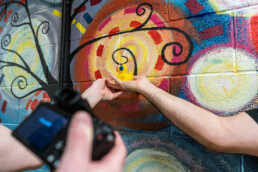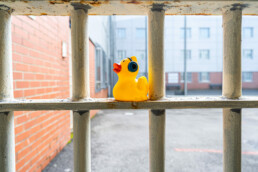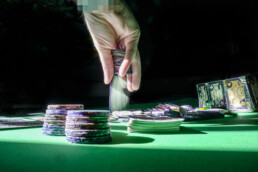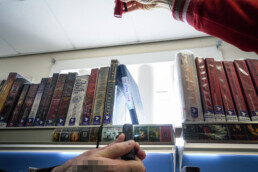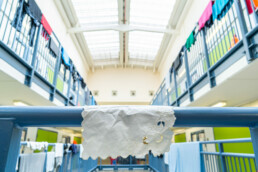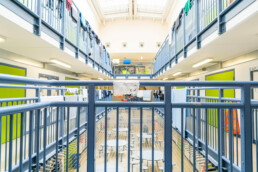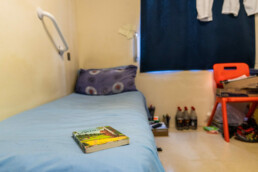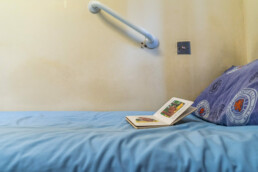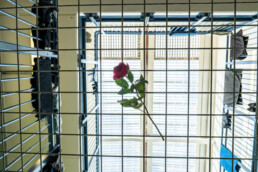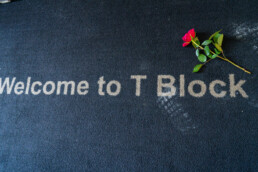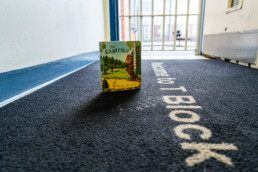The Freedom of Art in a Prison
“Have a good weekend miss” he said as we left on that second Friday afternoon of our
photography workshop, “you too” I replied.
It then hit me, that these common exchanges of pleasantries I have with folk I meet most Fridays in
my day-to-day world, are now hanging with new meaning and a new perspective. Because his
weekend ahead looks very different to mine and with far fewer opportunities to make it truly feel
like ‘a good weekend.’ We looked at each other for a moment and didn’t state the obvious, my
apologetic smile for his feelings of incarceration spoke the words into that gap.
I have recently been part of an artists’ collaboration where we’ve delivered a series of workshops
to residents and staff at Parc Prison in South Wales. I always knew that the photographic element
of these workshops would likely be the most challenging to think up, set up and take inside a
prison, perhaps even the most contentious. Mainly due to the expected issues around clearance of
cameras and not being able to take in or out my memory cards. There is also the Prison’s brief to
consider, on what types of images can be shown, whilst adhering to anonymities outside the
prison’s walls.
This was already beginning to conflict with the very layers and processes of my artistic approach.
Which went on to gift me with new angles to find and to tell an authentic and more contemporary
way of documenting some the residents’ stories, as well as some of my own, during my time spent
at Parc.
So I chose to share my personal photographic project, Discarded With Honour with some of the
people living there. It’s a personal project that began in 2021, where I photographed the no-longer-
used objects of mine and others, in places that gave us a sense of connection with them, recalling
these objects’ stories. Sometimes, I’d get rid of the object, sometimes I would keep it, but let go of
feelings associated with it that were no longer helpful to me. Using this personal project was the
pivotal point in linking a photojournalism-styled workshop inside a prison, by giving voice to our
possessions to share some incredibly personal stories.
Some of the men who took part in these workshops were fathers themselves, though each
participant spoke of their family by using objects, owned or borrowed, to share and relay some
intimate stories, which in turn opened up discussions between us that held no boundaries. That
gave a freedom of speech they quite possibly wouldn’t of had within their daily lives behind bars.
Within the first half an hour, I realised that this was one of the most receptive group of people we
could have worked with. So I threw down my workshop notes and told them that we were going off-
piste, that they would now be leading this workshop. It was unexpected and rewarding and what
followed were the most incredible and honest conversations between us all.
These conversations were sparked by objects such as my daughter’s Gruffalo book, how one
father, Richard reminisced about reading this to his own children each night. How another
participant, Daniel shared some words from his journal, the only link he currently has between a life
before and a life right now.
I was surprised at how fiercely protective I became over the men’s photographs, even before
seeing them on screen. Like Tom’s handmade poker chip set, where he gave such thought and
intention about where to place it and photograph it within the limited access to space that we had
to show a connection as he wanted to. Like my daughter’s old bath toy duck, now named ‘Dave’ by
Lewis, who became innovative in the Media Centre’s library as we searched for books with pictures
of water to connect Dave with.
Dee, my co-workshop facilitator and I would talk about the images made that day on our drive
home each week. Describing every one them from memory and hoping that they would make the
cleared list. There was one instance where I found myself explaining to member of staff that I felt
anxious at their offer to crop out what I knew to be an integral part of one of my photographs,
because it displayed one of the men’s tattoos. It’s now that I understand the safeguarding reason
around this ruling of ‘no distinctive or identifiable markings’ and the conversation led to a solution of
me editing these images in-house alongside the men, who got the opportunity to take part in the
post-editing process.
By using Discarded With Honour as a stepping stone and inviting this group of men to take part,
gave us each an equal platform to share some intimate stories through our objects. It gave us each
a language to begin some honest conversations through the art of photography, giving full freedom
in those few hours. I hope we can continue with this project, sharing the freeing role that art and
creativity holds for even the most diverse of communities.
Creative Roots is a unique programme delivered by the artists’ collective, Das Clarks. Where the
programme inspired those living and working in confinement to explore creative freedom. With
sessions delivered on the residential wings of Parc Prison, Creative Roots involved an initial
foundation programme of creative exploration back in 2021. The foundation activity developed into
specialised sessions in print making, painting, photography and writing. The work featured in a
performance-based exhibition during May 2023 – one inside Parc Prison and the other open to the
public in Newport, South Wales. The artwork and performances were created by residents, staff
and the artists involved in the project.
Das Clarks are Gareth Clark, Marega Palser and Dee Rogers with Bill Chambers, Marion Cheung
and Jo Haycock.
Featured in the Late Summer 2023 issue of JUNO Magazine

